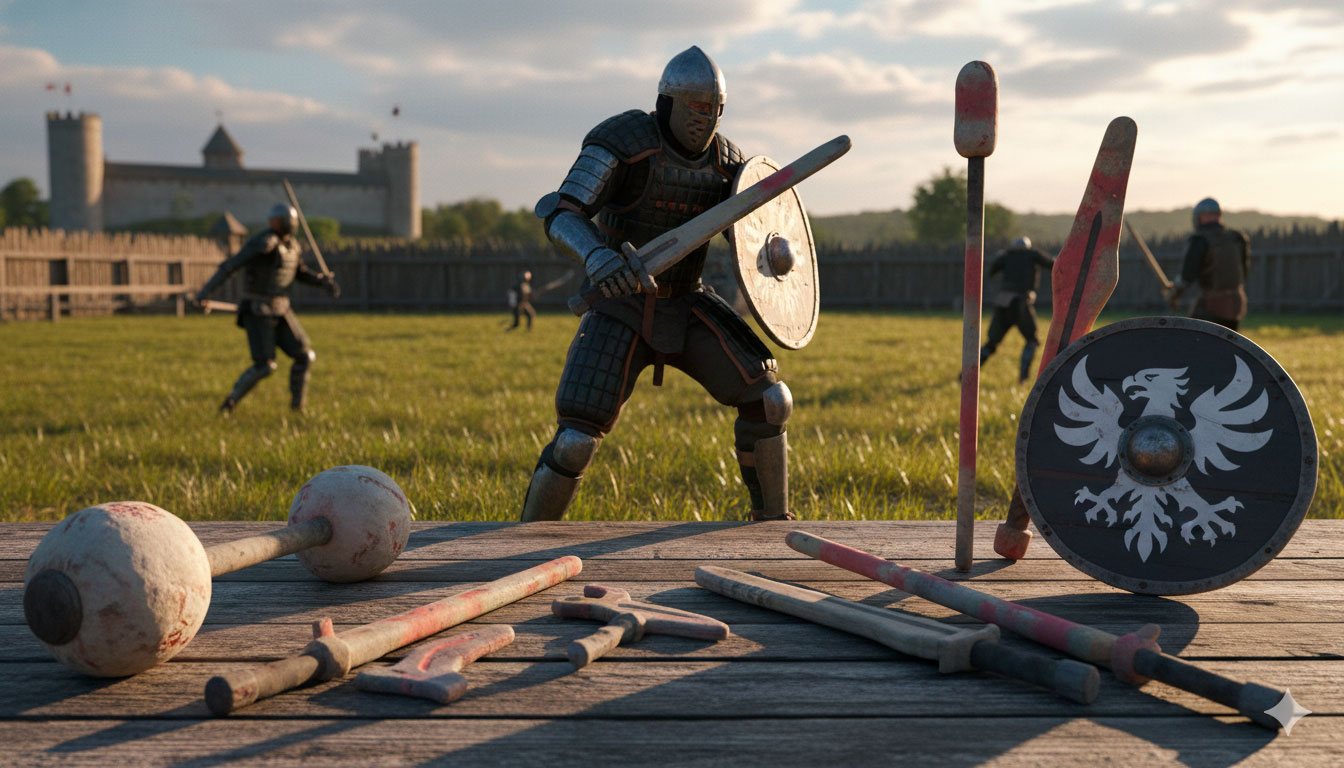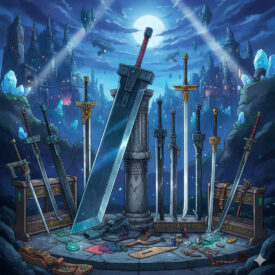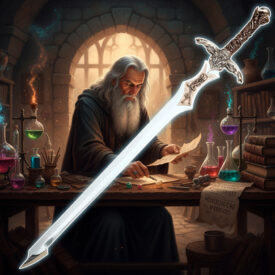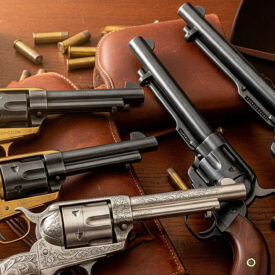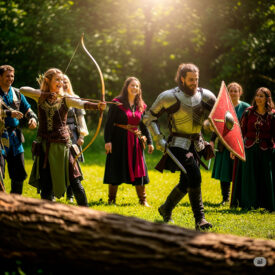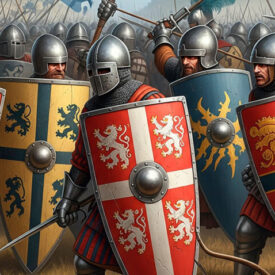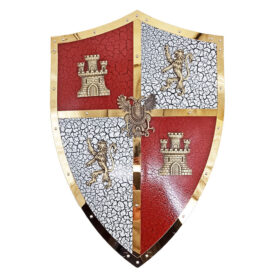Have you ever dreamed of wielding a sword in the heat of battle, feeling the adrenaline of an epic duel? Softcombat invites you to live that fantasy, but to write your own legend, you need the right weapon. Choosing the perfect blade, shield, or projectile is not just a matter of preference; it is a strategic decision that defines your combat style, your role on the field, and your path to victory.
From the agile duelist to the unbreakable tank, every warrior finds their extension in the vast arsenal of softcombat. But how to choose between the speed of a dagger, the impact of an axe, or the reach of a spear? Join us on this journey where we will unravel the secrets of each type of weapon, explore its tactical uses, and equip you with the knowledge to forge your own destiny on the battlefield, ensuring that every blow is as accurate as it is safe.
The Heart of Softcombat: Weapons for Every Warrior
Softcombat, or playful combat, is a discipline that simulates epic battles with padded weapon replicas, turning physical skill and strategy into the soul of each confrontation. Weapons are the epicenter of this sport, and their diversity allows each participant to find the one that best suits their warrior spirit.
Weapons are categorized primarily by their handling, dividing into two large groups: one-handed weapons and two-handed weapons, each with a distinct purpose and combat philosophy.
One-Handed Weapons: Agility and Precision
These weapons, generally no longer than 110 cm, are the choice for those seeking agility and speed. They allow great mobility, facilitating quick changes between attack and defense. The free hand can wield a shield or a second weapon, offering unparalleled tactical versatility.
The Basic Arsenal for Agile Fighters
- Foam swords: They are the pillar of softcombat, available in a multitude of sizes and styles. From short swords of 60 cm to versions that reach 110 cm. Their balance makes them the ideal option for beginners, allowing them to learn the basics of combat without being overwhelmed.
- Daggers and knives: With a maximum of 50 cm, they are perfect auxiliary weapons for surprising or as a last resort. They are stealthy and lethal at close range, although their main use is hand-to-hand combat and not throwing.
- Hand axes, maces, and hammers: These blunt weapons, not exceeding 105 cm, add an aggressive touch to the game style. They offer devastating impacts and require specific techniques for their handling, being ideal for experienced combatants looking to master new movements and add a “critical” to their attacks.

Two-Handed Weapons: Reach and Devastating Power
For those who prefer brute force and long-range control, two-handed weapons are the best choice. They require the mandatory use of both hands for valid blows, but in return, they offer greater reach and the ability to dictate the pace of combat. They are preferred by “tanks” and those looking to execute complex maneuvers and cause significant damage.
The Giant’s Arsenal on the Battlefield
-
- Greatswords and claymores: With swords up to 135 cm, they are the quintessence of power. They demand strength and precision, rewarding the warrior with the ability to control large areas.
- Two-handed axes, maces, and war hammers: These weapons, whose total length and width do not exceed 135 cm, are instruments of mass destruction. Ideal for breaking defenses and destabilizing the opponent.
- Spears and halberds: With a maximum of 250 cm, they transform the combatant into a mobile wall. They allow keeping adversaries at bay and controlling the battlefield from afar, although spears of 200 cm or less can be used with one hand in certain styles.
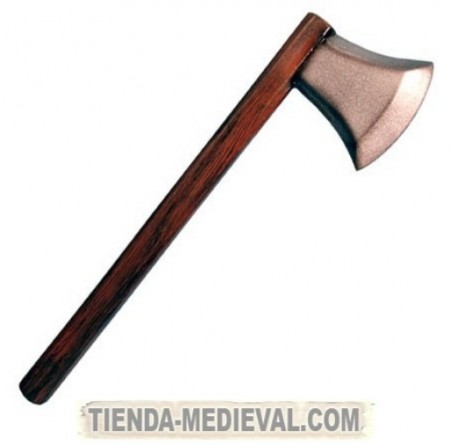
- Combat staffs: Up to 200 cm, they offer defensive and offensive versatility, with impact zones at the ends.
- Chain weapons (flails and threshers): With a total length of up to 105 cm, these flexible weapons impact only with their padded head, offering a unique challenge in their handling.
Although foam swords are the most popular, axes, hammers, and maces also offer different and exciting combat dynamics. Their choice largely depends on the play style and personal preferences of the combatant.
The Shield’s Role: Your Second Chance
Your shield is not just a defensive piece; it is your unyielding companion on the battlefield, your “second chance” against your rivals’ blows. Its choice is as strategic as that of your main weapon.
Types of Shields and their Tactical Use

- Round shields: With a maximum diameter of 65 cm, they are the most common and recommended for beginners. Their balance and lightness make them versatile and functional, perfect for balanced coverage.
- Rectangular shields: With a maximum of 50 x 70 cm, they offer wider coverage, ideal for those seeking to protect multiple sectors.
- Heraldic shields: Up to 50 x 85 cm, with specific polygonal shapes, they are for those who desire a more stylized and distinctive defense.
In modalities such as fullcontact, the shield transcends its defensive role and can be actively used to strike, create distance, or perform charges, adding a layer of complexity to combat.
Mastering Distance: Projectile Weapons
For those who prefer long-range strategy, bows and crossbows are the perfect choice. They allow for real distant combat that requires stealth, accuracy, and practice.
- Bows and crossbows: Their effective power should not exceed 25-30 pounds, prioritizing safety. It is essential to use safety arrows and bolts with padded tips, and many European events only allow industrially manufactured projectiles.
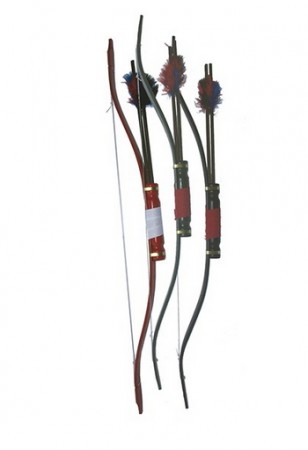
- Throwing weapons: Knives, shurikens, javelins, and darts allow you to be lethal from afar. However, throwing them is prohibited within 3 meters of the opponent, and small weapons cannot have a rigid core.
Protecting the Warrior: The Armor
No warrior is invincible on their own; protection is as vital as the weapon they wield. To enjoy softcombat safely, protective gear is indispensable.
-
- Basic protections: A set that includes a helmet, gloves, knee pads, elbow pads, and a chest plate is essential to avoid unexpected injuries in softcombat battles.
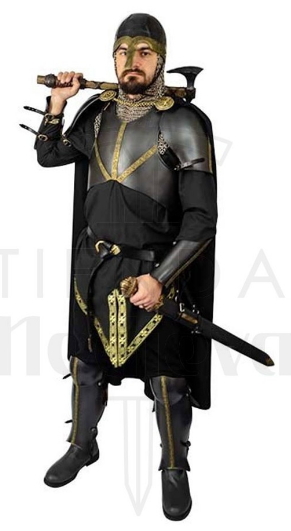
- Appropriate footwear: Sports shoes that offer good grip and comfort ensure agility and safety on the battlefield.
- Tactical armor: For those who wish to take their experience to the next level, tactical armor offers additional protection without restricting mobility. Lightweight and adjustable, they allow fluid movement.
Weapon Construction and Safety: A Fundamental Pillar
Beyond style, **safety** is the unbreakable principle of softcombat. All weapons must be safe, padded, and pass a strict **Safety Test** before any combat. Negligence in this aspect can have serious consequences, which is why construction standards are rigorous.
Materials and Structure
- Central core: Generally 20 mm PVC, fiberglass rods, or bamboo, it must be slightly flexible. Wood, metal, or filling with weights to increase impact are strictly prohibited.
- Padding: This is the key safety element. A minimum of 2.5 cm of foam on each side of the edge (main impact zone) and at least 1 cm on surfaces that could accidentally strike is required. The pommel must have a 2.5 cm foam extension that protrudes at least 1.5 cm.
- Flexion (Whipping): To avoid the dangerous “whiplash effect,” the maximum allowed flexion is 10% of the total length of the weapon.
- Tips and edges: Must be slightly rounded to prevent any puncturing injury.
- Grips: Although not always requiring covering, masking tape or rubber is recommended for optimal grip.
It is vital to check the good condition of the weapons and follow safety clothing recommendations, such as goggles, gloves, and a groin protector.
Combat Strategies and Styles
Softcombat thrives on the diversity of styles, classified by weaponry categories in tournaments. Each style offers advantages and disadvantages that the wise warrior must weigh.
| Combat Style (Category) | Weaponry | Advantages/Strategic Focus |
|---|---|---|
| One-Handed Weapon (1A) | A short weapon, sword, mace, or axe. | Focuses on the critical hit. Allows fast and agile movements. |
| Two One-Handed Weapons (2A) | Two one-handed weapons (e.g., two swords, scimitar and large secondary weapon). | Focuses on multiple attacks. Attack capability is exponential if used in conjunction with a powerful attack. Requires dexterity. |
| One-Handed Weapon and Shield (A+E) | A one-handed weapon and a shield. | Offers a strategic and psychological advantage to the rival by making them think twice before attacking. |
| Two-Handed Weapon (2M) | A two-handed weapon (greatsword, axe, hammer). | Focuses on maneuvers and damage. Requires higher strength and is compatible with heavy armor. |
| Free Category | Any combination of weapons allowed by the organization. | Allows maximum versatility and creativity in the use of the arsenal. |
- Combat Style (Category)
-
- One-Handed Weapon (1A): A short weapon, sword, mace, or axe. Focuses on the critical hit, allowing fast and agile movements.
- Two One-Handed Weapons (2A): Two one-handed weapons. Focuses on multiple attacks; attack capability is exponential if used in conjunction with powerful attack and requires dexterity.
- One-Handed Weapon and Shield (A+E): A one-handed weapon and a shield. Offers a strategic and psychological advantage to the rival by making them think twice before attacking.
- Two-Handed Weapon (2M): A two-handed weapon. Focuses on maneuvers and damage, requires higher strength and is compatible with heavy armor.
- Free Category: Any combination of weapons allowed by the organization. Allows maximum versatility and creativity in the use of the arsenal.
Choosing Your Path: A Beginner’s Guide
If you are new to softcombat, choosing your first weapon can seem overwhelming. Here is a guide to get you started:
- One-handed sword: Start with a light and versatile one-handed sword. It is the ideal starting point to learn the basic mechanics of combat.
- Add a shield: Once you master the sword, incorporate a shield, preferably round. It will provide crucial defense while you perfect your offensive skills.
Clearing doubts about softcombat and its practice
What are the main differences between fullcontact softcombat and LARP softcombat?
The main differences between fullcontact softcombat and LARP softcombat are:
- Fullcontact softcombat is a more intense and physical modality, where there are no restrictions on the force of blows or allowed impact zones (except head and neck which are usually penalized). It allows grappling, charges, and physical contact, requires body protection such as gambesons or armor, and combat is direct and aggressive without combat dramatization.
- LARP softcombat (including classic and interpretive modalities) is less physical in terms of applied force and more guided by rules, setting, and character portrayal. Hit points, class skills, and injury interpretation are used. Dramatization and combat narrative are key, and safety rules and measures vary depending on each event.
Fullcontact prioritizes realistic physical combat without restrictions on force or contact (with protections), while LARP softcombat combines simulated combat with narrative and scenic rules that modulate the interaction and impact of blows.
What types of weapons are most popular in softcombat?
Softcombat has a variety of weapons that adapt to different combat styles and participant preferences.
Most popular weapons
Foam swords are the most common weapon in softcombat. They come in different sizes and styles, allowing the player to choose from options that suit their technique and comfort. These weapons are versatile and work well in both individual and group combat.
Shields represent another fundamental element, with several popular varieties such as the circular Viking shield (light and agile), the Roman scutum shield (for robust defense), the small circular buckler (for maximum mobility), and the rectangular medieval shield (balanced option). The type of shield chosen by the combatant depends on their role and combat strategy.
Projectile weapons, specifically safety bows and arrows, are an excellent option for those who prefer long-range combat. The effective power of these bows generally does not exceed 25-30 pounds to ensure safety.
Other hand weapons include axes, hammers, maces, daggers, and knives, all padded and made with safe materials. These weapons normally do not exceed 110 cm in length and offer different combat dynamics.
Foam swords are the most widespread, but the popularity of other weapons varies depending on the type of event and the individual preferences of the combatants.
How is safety ensured during a softcombat battle?
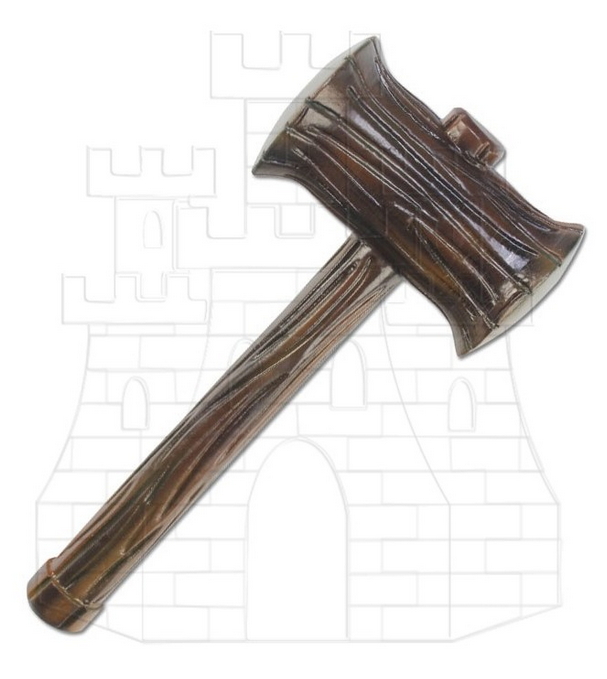 Safety during a softcombat battle is primarily ensured by the use of soft weapons that comply with strict manufacturing standards and pass a safety test before combat to ensure they are not harmful. Direct physical contact, blows to the head and neck, pushing or charging with shields are prohibited, and protective clothing such as gloves and safety goggles must be worn. In addition, there are specific rules regarding the length, rigidity, and coating of weapons to prevent injuries. All of this is supervised by judges or monitors who can remove any unsafe equipment before or during combat.
Safety during a softcombat battle is primarily ensured by the use of soft weapons that comply with strict manufacturing standards and pass a safety test before combat to ensure they are not harmful. Direct physical contact, blows to the head and neck, pushing or charging with shields are prohibited, and protective clothing such as gloves and safety goggles must be worn. In addition, there are specific rules regarding the length, rigidity, and coating of weapons to prevent injuries. All of this is supervised by judges or monitors who can remove any unsafe equipment before or during combat.
What specific rules must be followed for the use of projectile weapons in softcombat?
The specific rules for the use of projectile weapons in softcombat are:
- Bows used must not exceed 25 pounds of force to avoid damage and ensure safety in the game.
- Projectile weapons must be handled with both hands (e.g., bows), maintaining control and safety in their use.
- All weapons, including projectile weapons, must pass a safety test before being used in combat to verify that they are not harmful or dangerous.
- It is forbidden to add extra weight to the weapon or modify it in a way that increases its danger.
- Projectiles and throwing weapons, such as darts, javelins, daggers, or throwing axes, can be used, but respecting safety measures and the use of shields for defense.
- It is forbidden to throw weapons when they are not designed for it, and it is forbidden to take weapons from adversaries during combat.
These rules ensure that projectile weapons in softcombat are safe, soft, and suitable for the game, preventing accidents or damage.
What body protections are necessary to participate in fullcontact softcombat?
To participate in fullcontact softcombat, it is necessary to wear body armor, given that strong blows are allowed throughout the body without restrictions on valid zones. This armor usually includes torso protections (chest plates or corselets), shoulder pads made of soft materials or synthetic leather to protect arms without limiting movement, and head protection is also recommended, although the head and neck are generally not valid striking zones and may be penalized. In addition, weapons require appropriate padding to absorb blows and prevent damage. The minimum essential body protection is a complete armor covering the torso, shoulders, and preferably the head, with safe and padded equipment for one’s own weapons and those of adversaries. Direct physical contacts and grappling are also usually prohibited to minimize risks.
Choose Your Weapon, Write Your Story
Choosing your softcombat equipment is a declaration of intent. It defines your role, your strategy, and how you will face the challenges of the battlefield. Whether you seek the agility of a one-handed sword, the forcefulness of an axe, or the long-range control of a bow, remember that quality, comfort, and, above all, safety are paramount.
Embark on your softcombat adventure with the confidence of carrying the right equipment. May every combat be an opportunity to demonstrate your skill, strategy, and passion. Get ready to experience exciting battles and forge your own legend!
VIEW MEDIEVAL FOAM WEAPONS FOR SOFT COMBAT | VIEW SWORDS FOR SOFT COMBAT | VIEW AXES FOR SOFT COMBAT | VIEW SHIELDS FOR SOFT COMBAT | VIEW ACCESSORIES FOR SOFT COMBAT | VIEW OTHER ACCESSORIES FOR SOFT COMBAT
